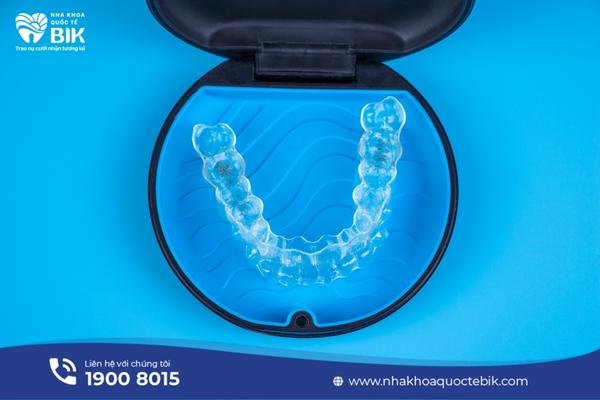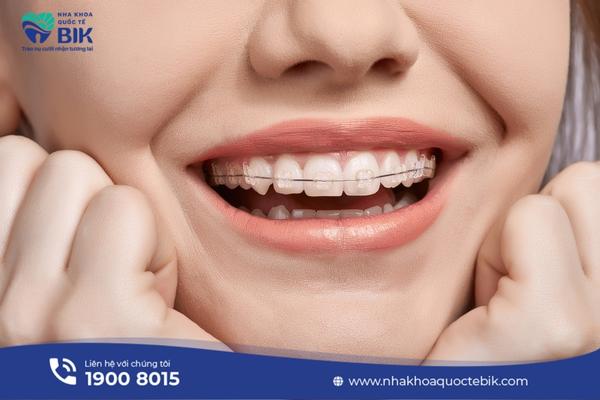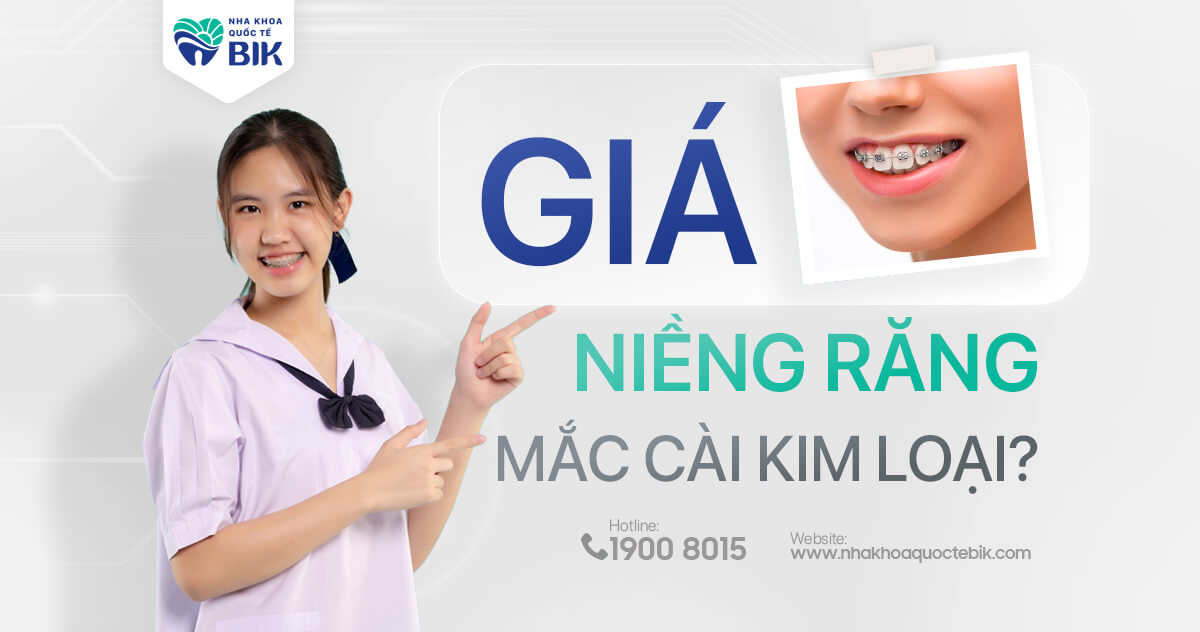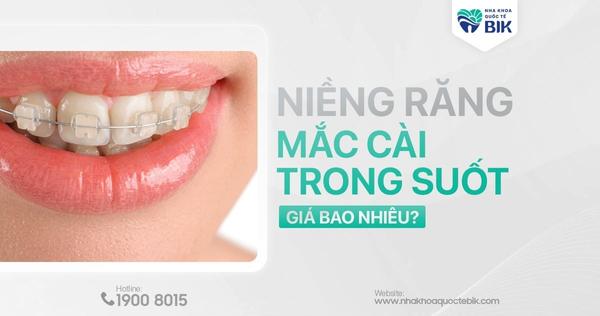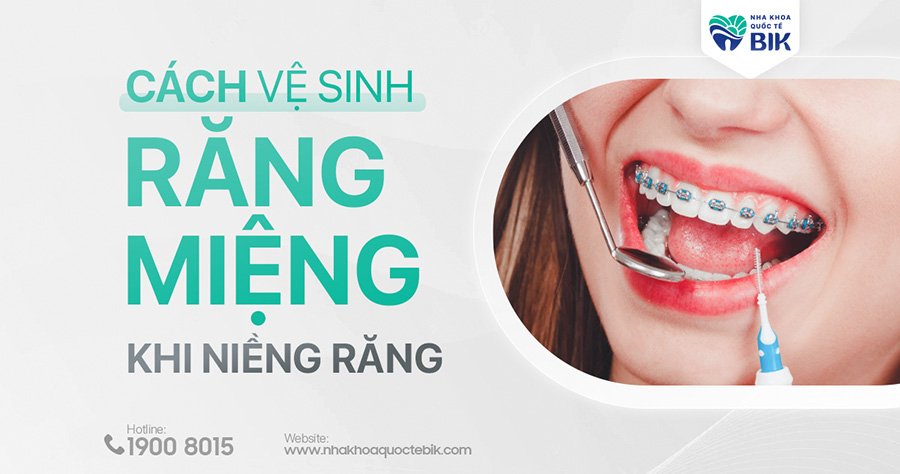Braces are an effective method to correct dental problems such as buck teeth, underbite, gaps, crooked teeth, etc. After completing the braces process, patients need to continue wearing a retainer to ensure long-term orthodontic results. So how long do you have to wear a retainer after braces? Is it necessary to wear it for life? The following article by Kim Dental will help you answer in detail..
What is a retainer?
A retainer is a device used after removing braces, helping to keep teeth stable and ensuring long-term orthodontic results. Many people do not pay attention or do not like to wear a retainer after completing the braces process, leading to teeth moving back to their original position. Therefore, wearing a retainer is considered the final challenge to having beautiful, even teeth.
How long should I wear a retainer?
How long should I wear a retainer after braces is a question that many people are interested in. The maintenance time will depend on the type of retainer that the doctor will prescribe, such as:..
How long should I wear a removable retainer
Most patients after braces will be given a set of clear retainers. So how long should I wear a clear retainer for the best results:
In the first 3 – 6 months: After removing the braces, you should wear the retainer for 22 hours or more a day. You should only remove it when eating or cleaning your teeth. The dentist will continue to monitor before prescribing you to wear the retainer only at night.
In the first 2 years: After a period of wearing the retainer full-time, the doctor will allow you to wear it only when sleeping.
From the 3rd year onwards: The time to wear the retainer will gradually decrease. You may be able to skip wearing it for 1 or 2 nights. However, it is best to try to wear it every night.
When not in use, store your removable retainer in its case. Avoid exposing it to heat and don’t forget to clean it daily. Wear it properly and remember to only drink water when wearing it. Avoid sugary drinks as they can get stuck between the aligners and your teeth, causing damage.
How long do fixed retainers last?
How long do fixed retainers last? In some cases, your orthodontist will attach a fixed retainer to the back of your teeth. You will need to wear it all the time, including when eating and brushing your teeth.
This type of retainer can be removed by your orthodontist, and after removal, you will be advised to wear a removable retainer while you sleep. Some people may need to wear a fixed retainer for at least 10 years. Many dental professionals recommend wearing a retainer part-time or even for life.
Compared to removable retainers, fixed retainers are easier to care for. You only need to brush and floss regularly when wearing this type of retainer. Interdental brushing also helps to completely remove plaque and tartar. Regular check-ups with an orthodontist are important to ensure that the retainer does not cause tooth decay, does not accumulate bacteria, and does not need to be removed.
Do you have to wear a retainer for life?
It is not necessary to wear a retainer for life, but wearing it for a long time will help your teeth become more even and beautiful. For cases of severe crooked teeth, wearing the retainer for a long time will help fix the tooth roots, preventing the teeth from moving back to their original position.
Factors that affect the length of time a retainer is worn
The length of time each person must wear a retainer can vary, with some only having to wear it for a few years while others may have to wear it for life. There are several key factors that affect the length of time a retainer is worn, including:…
Age of braces
When you get braces at an older age, the length of time you will need to wear them will be longer. Typically, children only need to wear them until they are adults so that their teeth can stabilize. In contrast, older people have more stable jawbones and teeth, leading to the ability to move the teeth back to their original position.
Condition of teeth and jawbones
Oral health also affects the length and process of braces treatment. If you are in good health and have few dental problems, braces treatment will be faster. On the contrary, if your oral health is not good, the treatment time will be longer and may have to be maintained for life.
Proper oral care
In addition to these conditions, following your doctor’s instructions and maintaining proper oral hygiene also helps reduce the time of braces effectively. Keeping your teeth and jaws clean also helps prevent problems related to disease and plaque after braces.
How to effectively shorten the time of wearing a retainer
Wearing a retainer has a great influence on the final result. Therefore, to ensure the effectiveness of wearing a retainer, you need to comply with the following:
In the early stages after removing braces, you need to wear the retainer continuously and not remove it and forget to put it back on, especially when the retainer must be removable.
Do not remove the retainer too often and for too long, only remove it when necessary such as when eating and cleaning.
Limit strong impact on the retainer when cleaning to avoid causing the retainer to be misaligned, loose and not hug the teeth tightly.
Clean your teeth and jaws properly after eating to reduce the risk of future dental health problems.
Common types of retainers
The length of time a retainer is used depends on the type of retainer used. Currently, there are two common types of retainers: fixed and removable:…
Removable
After completing braces, your doctor will usually instruct you to wear a removable retainer full-time for about 4 to 12 months. The retainer must be worn properly and should only be removed when eating or brushing your teeth. After the prescribed time, your doctor will check and consider whether you need to continue wearing the retainer.
Even if you don’t feel your teeth moving, wearing a retainer is still very important. In particular, wearing it at night helps ensure that the results of your braces last. The time it takes to wear a retainer can last from a few months to a few years or even indefinitely depending on the condition of each person’s teeth.
Fixed retainer
With a fixed retainer, you don’t have to worry about forgetting or remembering to wear it after eating or brushing your teeth. This type of retainer is attached to the body of the tooth in a convenient and discreet position, usually behind the teeth. However, compared to removable retainers, you need to wear this retainer for a longer period of time.
According to dental experts, fixed retainers are often recommended for use in cases where teeth are crooked, crowded or spaced apart.
When wearing a fixed retainer, there is a high risk of oral health problems. However, you can avoid them by maintaining proper oral hygiene. Some of the disadvantages of retainers include:
- Gum damage: If the retainer is damaged, it can cause damage to the gums.
- Tooth decay: The retainer makes it difficult to clean the mouth, leading to food debris getting stuck between the wire and the teeth.
- Discomfort: The retainer can cause friction with the tongue, causing discomfort and scratches.
Notes on oral care when wearing a retainer
After braces, in addition to being concerned about the time you have to wear the retainer, many people are also concerned about how to care for their teeth when wearing the retainer. Here are some things to keep in mind:
- When wearing a retainer, dental hygiene is very important. You should use a toothbrush for braces, then use mouthwash, water floss and dental floss to remove food and bacteria on your teeth.
- Retainers need to be cleaned daily. Remember not to brush your teeth too hard and do not use hot water to clean, as this can deform the plastic retainer.
- When not wearing the retainer, store it in a separate box to avoid losing it.
- Do not remove the retainer too often, only remove it when necessary.
- If the retainer is lost or damaged, notify your doctor immediately to have it redone.
Thanks to the above sharing, you now understand how long you need to wear a retainer after braces. Follow your orthodontist’s instructions to protect the best braces results and avoid the teeth returning to their original position.

